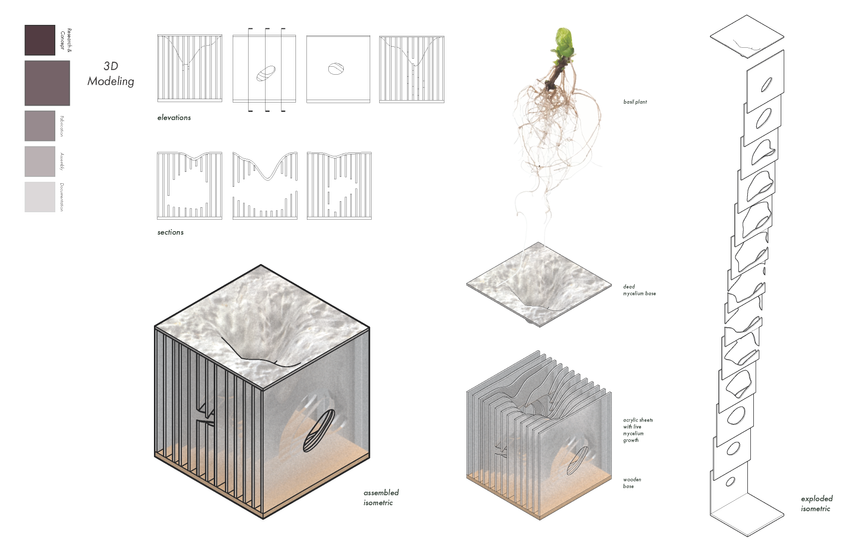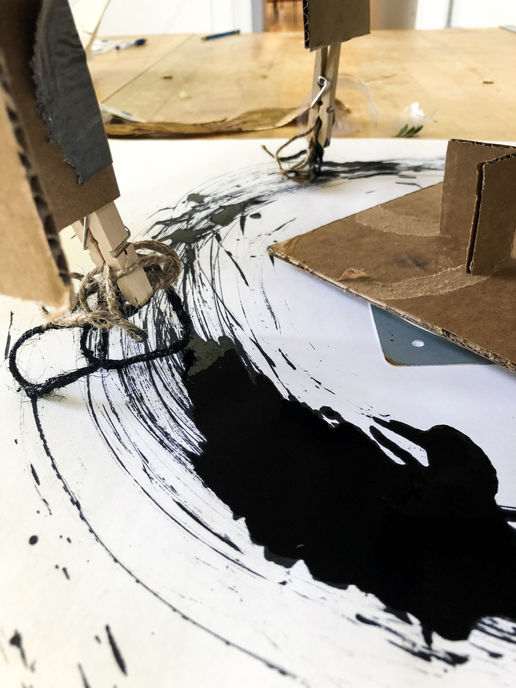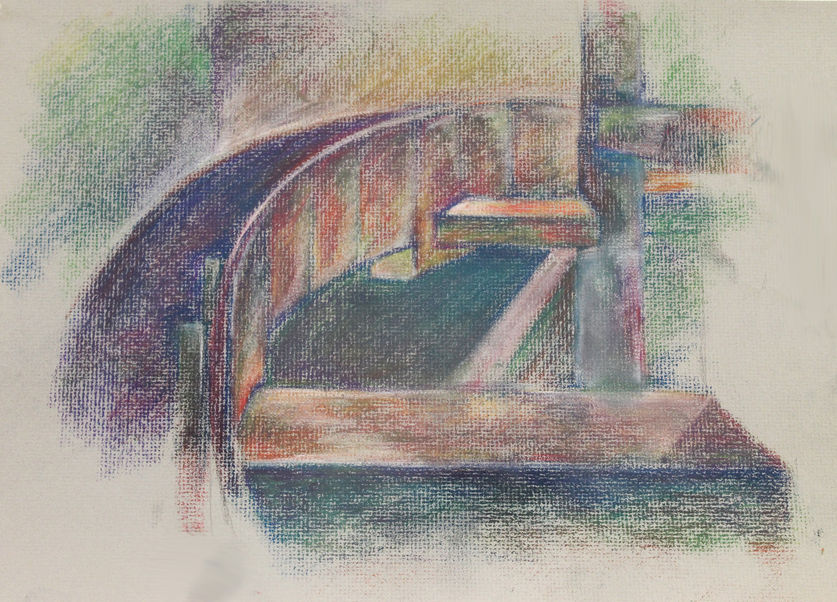EDEN
How is Man’s destruction of our natural environment both devastating and beautiful?
What role does fashion and design play in bringing these issues to light?
How can we protect what is left of this Eden?
This fashion line is inspired by Man’s exploitation and selfish devastation of the Earth’s natural resources. Deforestation is draining sustainable resources to their depletion, crude oil seeping into the sea is a devastation to the ocean’s inhabitants, and warmer waters stress coral landscapes to the point of death. The reality of this death and destruction sets an expiration date for the future of Earth as humans prioritize their personal needs before the planet’s. Through our work we hope to represent these upsetting degradation with a design experiment about the environment and man’s menacing takeover.
In collaboration with Vincent DeRienzo and Leah Kendrick
Spring 2019
MYCELIUM PLANTER
How can we challenge the conventional relationship between organism and habitat, plant and vessel?
How can a Mycelium planter and the plant it nurtures feed off of each other, and support mutual growth?
In the current design paradigm, to what extent should designers relinquish some control to the material? Should our position transition from that of pure manufacturer to caretaker?
How can the design reflect the interplay of geometric and organic form, digital and natural fabrication, hard and soft, dead and alive to reveal the richness of two concurrent ecosystems?
For this Mycelial vessel, we were interested in subverting the typical plant and planter relationship by using an emergent biomaterial that will continue to grow alongside the lifeform it supports. We considered in particular the unique versatility of Mycelium to grow into the frame it is placed in and the differences in resulting rigidity based on its state of life. Our final design incorporates both a baked Mycelium base to contain the plant, as well as a supporting structure of still inoculating Mycelium that operates within a separate ecosystem beneath the plant.
Bioformation Class | In collaboration with Minyoung Jeong and Hagan Miller
Fall 2019
HOMETOWN
How can we tell the story of our hometown with only found and constructed images?
What narrative are we trying to depict through visual information?
For this assignment on hometown narratives, I was interested in presenting a commentary on the aesthetic of the Singaporean built environment and the sense of homogeneity and constructed imagery that we inherited from the founding fathers who built this city up from the ground with efficiency and space maximization in mind. This coupled with today's re fabrication of a lost culture feeds into a narrative of an overly curated and designed city, reflecting on ideas of authenticity and what it means to have a national identity in the 21st century.
Future Fictions studio
Fall 2019
IMMURED GROWTH
The once five-hundred-year flood has now become an almost weekly occurrence. With it washes ashore layer upon layer of phosphorous, nitrogen, potassium, and other regenerative nutrients – onto lands which have not been used for agriculture in decades due to the arid soil resulting from industrial and monocultural farming procedures.
Over time these mineral deposits build up around vestiges in the landscape, rocks, dead roots, clay or stiff soil – anything that allowed them to hold and not be washed back by the receding tides. What must have also come with the floods (although we aren’t entirely sure, it could have also been long-dormant in our soil, or some peculiar result of a chemical process natural or not) is a bacteria which has acted to solidify these mineral deposits into structures embedded within the soil.
Over time the wind and water have washed away the loose layers of topsoil which had no biomass to anchor it down, unveiling these rich mineral formations to above ground life. Due to their composition and the way in which they were formed these structures proved alluring to many different avian species. As things began to grow on their nutrient rich surfaces, the birds began pecking at the forms. Ingesting portions inadvertently, and very consciously taking other pieces away to use as building materials, they began to redistribute the immured minerals to neighboring ecologies very much in need. Through a natural regenerative process, the birds, which were the instigators, but later also an abundance of other organisms within the ecology have begun the long process of replenishing the depleted landscape using these deposits of veritable fertilizer gold. The extremely concentrated object begins to dissipate and spread its riches back out across the landscape.
Bioformation class
Fall 2019
DESIGN RELINQUISHED
How can design be relegated to a set of rules and command structures, forming a new language of intentional accidence?
How does the authorship of the artist change as we relinquish issues of aesthetics and composition to a predesigned system?
The project explores the emerging question of computation in architectural design as we possess an ever-increasing range of tools that allows us to design in new and more complex ways. As these complexities move beyond the reliable grasp of the human mind, how can we establish a new process of design that relinquishes control to the system instead of the architect in a way that generates new and exploratory forms. In this experiment of the artifact, a combination of digital and analog tools were used, where the object was designed through digital platforms, then laminated, fragmented and reassembled by hand.
Fundamentals of Computational Design Class | In collaboration with Longney Luk
Fall 2017
TECTONIC WOOD SCULPTURE
This project began through a series of drafted tectonic drawings exploring the form and movement of daily household objects. The drawings of two objects were then combined to form a new hybrid drawing which formed the basis for an eventual wood sculpture that incorporated elements of tectonic and wood joinery.
In collaboration with Stephen Sontag
Spring 2018









































































































